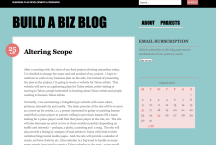While living in or visiting the mountainous region of the Sierra Nevada, humans must learn to share our environment with a variety of wildlife, including coyotes, raccoons, mice and bears. As bears search for food, they sometimes find residential and commercial dumpsters which can turn a wild bear into a trash bear. This is a serious issue, and the bears sometimes will break into cars, garages and houses in search of their addiction to trash and their instinctual hunger. It is important for humans to strive to be bear aware to protect themselves and the wildlife that inhabit this area.
Betty Bear is a female black bear. Despite the name black bear, Betty’s fur is actually dark brown in color, and she has a brown muzzle. Betty weighs just over 200 pounds. (Adult female black bears generally weigh between 100 and 200 pounds; adult males typically weigh between 150 and 350 pounds, but they can be larger). Betty enjoys living in the Lake Tahoe area as it provides her and her cubs with abundant sources of water and food and dense forested mountainous terrain, which offers certain elements of protection from weather and prey. Her favorite foods include ants and other insects, nuts, acorns and Manzanita berries. However, black bears are omnivores (like humans), which means they may eat whatever appears to be edible. Like her fellow bears, when Betty cannot find natural food, she’s drawn to the houses and campgrounds of humans, drawn by the powerful aroma of human garbage.
Understanding that living with wildlife is an important part of living at Lake Tahoe, I decided to hear what the bears have to say about sharing their environment with humans.
Ta-Haps: Why have so many black bears been in and around the human population of Lake Tahoe this year?
Betty Bear: The last couple of years have been difficult for us due to the dry conditions in our area. Our instinct is for survival, which brings us into contact with humans and their garbage as we search for food.
Ta-Haps: Is it okay for people to give you and your cubs food?
Betty Bear: Lake Tahoe is not a zoo. It’s our home too. When people leave their food or garbage out, we can quickly become reliant on this as a source of food. It’s very bad for us to eat what isn’t natural. We forget about foraging in the forest and expect humans to provide our lunch. The more we interact with humans, the more we lose our instincts for fear and caution. We return to your sources of food. If we don’t find food in your house, we will check with your neighbors
Ta-Haps: What should people do if they see you or another black bear?
Betty Bear: When you see a bear, you should raise your arms high and growl. Try to look big and tough. By nature, bears are afraid of humans. Don’t overdo the aggression, however, as we are protective of our cubs.
Ta-Haps: Do you think that bears and humans can live in harmony at Lake Tahoe?
Betty Bear: Yes, but we need to respect each other. The best thing that humans can do to protect bears is to make sure they never leave food or garbage out where it may attract us. Eating and becoming reliant on humans for our food is typically a death sentence for bears. If you care about us and want to ensure our survival, bear proof your house and garbage system. We can live in harmony, but the less direct interaction we have, the better. We are not here for human entertainment. We are a part of the delicate balance of Lake Tahoe’s natural ecosystem. Humans who live and visit here should try to be a part of that harmonious balance.
Interview with a Bear was created with the help of publications written by the BEAR League, (530)525-PAWS (7297) and savebears.org and the California Department of Fish and Game, keepmewild.org.
LINKS: savebears.org, keepmewild.org


